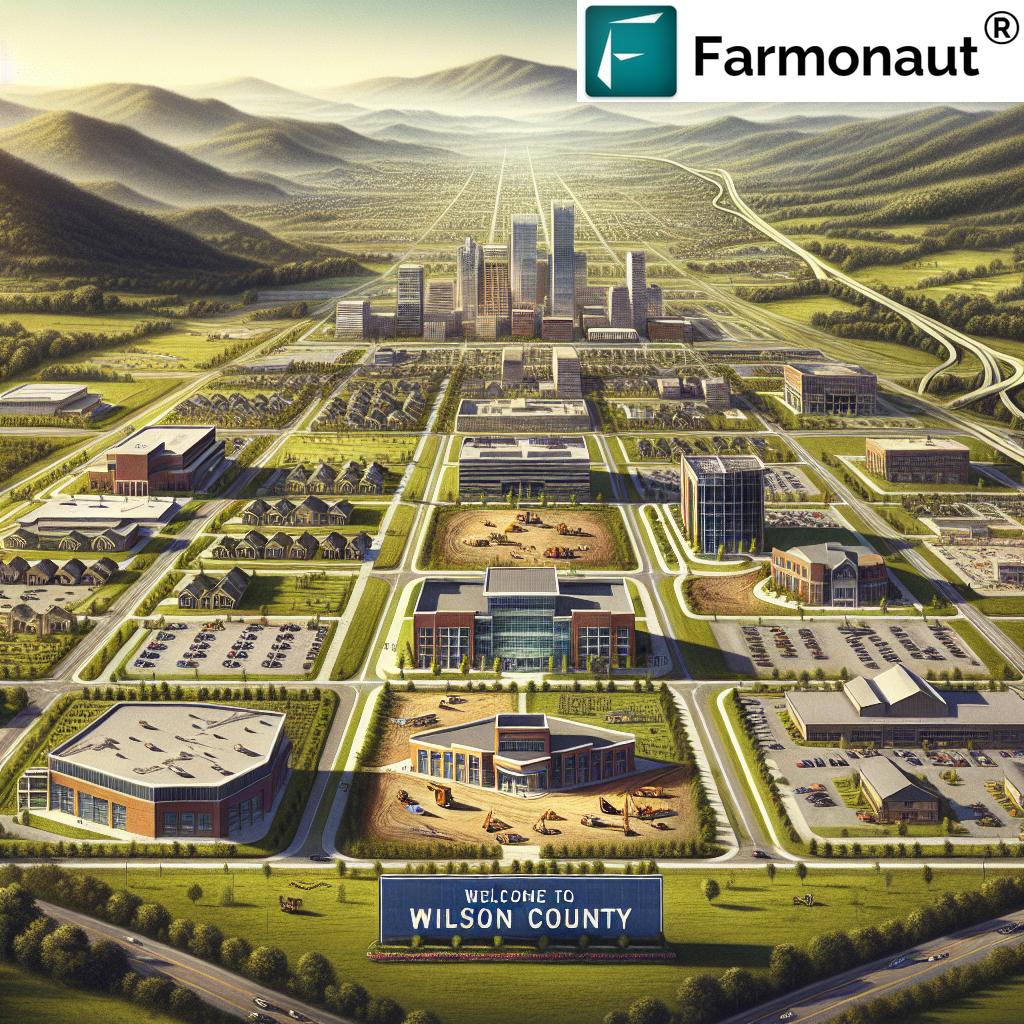Utility Line Repairs: Top 5 Critical Updates in Stephens City
Table of Contents
- Introduction: Ongoing Utility Line Repairs in Stephens City
- A Legacy of Infrastructure: Historic Town Utility Updates
- Critical Utility Repair Updates Summary Table
- Top 5 Critical Utility Line Repair Updates
- Pipe Materials, Soil Acidity, and Corrosion: The Root Issues
- Water Shut-Off Notifications & Payment System Updates
- How Advanced Tech Can Support Infrastructure Management
- Conclusion: Future-Ready Infrastructure for Stephens City
- FAQ: Utility Line Repairs in Stephens City
Introduction: Ongoing Utility Line Repairs in Stephens City
We are witnessing a pivotal moment in Stephens City, as our commitment to utility line repairs and ongoing infrastructure improvement becomes increasingly critical. As the second-oldest town in the Shenandoah Valley, Stephens City’s water and utility systems are not only historic, but have also endured decades of usage. Our town council members work session updates confirm our unified focus on comprehensive upgrades to meet future needs.
In this blog, we’ll explore the top 5 critical updates in Stephens City utility line repairs—from water line replacement and sewer main replacement to innovative approaches for addressing pipe corrosion issues. We’ll also highlight our advancements in the water bill payment system, review how we communicate with residents through water shut-off notifications, and investigate how cutting-edge technologies like those from Farmonaut offer powerful models for ongoing infrastructure monitoring.
Focus Keyword: Utility line repairs—this phrase will remain central as we detail these significant challenges, demonstrate the steps being taken by town staff, and outline what these updates mean for our growing community of residents, local businesses, and future generations.
A Legacy of Infrastructure: Historic Town Utility Updates
Stephens City, nestled in the heart of the Shenandoah Valley, is a model of how historic localities are navigating infrastructure transformation. Our city council and staff have inherited a network of pipes—galvanized, copper, and mixed-material—that thread through old streets like Green Street and critical residential routes such as Laura Drive. Over time, these networks have suffered from the area’s unique soil acidity, resulting in persistent corrosion and the need for repeated repairs.
Recently, at a town work session, Town Manager Mike Majher explicitly demonstrated how previous piecemeal fixes—such as inserting copper lines into decaying galvanized pipes and using polyethylene insulation—created new challenges. Connecting lines from outside utility companies and patching with incompatible materials has led to leaks and further progressive failures. These stories, especially along Green Street, encapsulate our need for large-scale, forward-thinking repairs rooted in modern best practices.
Transitioning to sustainable materials and modern construction methods hasn’t just improved reliability—it’s also reduced maintenance interruptions for residents and enhanced water quality citywide. We’ll now walk through the precise updates that form the backbone of our municipal improvements.
Critical Utility Repair Updates Summary Table
| Repair Location | Type of Utility Line | Issue Identified | Estimated Repair Timeline | Expected Impact on Residents |
|---|---|---|---|---|
| Green Street (West Section) | Sewer Main & Water Line | Extensive corrosion, progressive leaks, incompatible patchwork | Completed by end of week | Short water cut-offs, improved future reliability |
| Green Street (Next Portion) | Sewer Main | Corroded galvanized pipes, soil acidity induced decay | Initiate within the next month | Minor temporary road closures, better flow |
| Laura Drive | Water Line | Patchwork leaks, copper insulation corrosion | Scheduled in next phase | Notification-based water interruptions, enhanced water quality |
| West Main Street | Water Line Replacement | Historic pipe failure, repeated leaks | Q2 2024 | Service cut-offs, major improvement to supply stability |
| Historic Downtown | Sewer Main | Mixed-material pipes, legacy corrosion | 2024-2025 | Staged block-by-block upgrades, significant long-term benefits |
Top 5 Critical Utility Line Repair Updates
1. Green Street Sewer Main & Water Line Replacement
The recent utility line repairs on Green Street stand as a clear example of infrastructure in evolution. Councilors saw firsthand the removed, misshapen, corroded pipes, emblematic of cumulative wear and progressive repair efforts over decades. Soil acidity has “consumed” galvanized pipe, leaving holes so large you could push a finger through them. Meanwhile, water had been leaking at specific cut points due to earlier, incompatible fixes using copper line and polyethylene insulation. The corrosion here prompted not just a sewer main replacement but a full water line overhaul.
- Key Issue: Progressive corrosion, leaks, legacy patchwork repairs.
- Outcome: End-to-end replacement delivers a robust, future-ready pipeline for both water and sewer.
Residents were informed through a series of notifications, minimizing disruption. These improvements will sharply reduce future emergency repair callouts—a win for our town’s staff, council, and all city residents.
Looking to monitor vast municipal or agricultural areas with the same precision as modern utility repairs? Farmonaut’s Large-Scale Farm Management App leverages satellite technology to help administrators and landowners track projects, detect anomalies, and plan resource deployment smartly.
2. Next Portion of Green Street Sewer Main
The work on Green Street isn’t finished. Our next scheduled repairs address adjacent sections with similar symptoms: rusted and thinned galvanized and copper pipes, advanced by aggressive acid soils. Past repairs—often with outer lines from multiple companies and connected by hasty methods—have exacerbated leaks and failures.
- Key Issue: Corroded main, multi-point utility company cut-ins, unreliable flow.
- Action: Tear-out, soil testing, modern installation with full notifications cycle for all affected households and businesses.
We are doubling down on prevention, looking to replace every portion of line suffering from these historic engineering mismatches, aiming for lasting reliability.
Farmonaut’s Carbon Footprinting tools offer real-time tracking of soil health and help administrators reduce environmental impact. Imagine evaluating your utility line replacements for their carbon footprint, just as you’d with any sustainable farm practice.
3. Laura Drive Water Line Upgrades
Laura Drive will soon undergo comprehensive water line repairs. The issue here lies with age, legacy patchwork, and corrosion accelerated by soil acidity. Past methods—using wrapped copper lines as an attempted fix for leaking galvanized pipes—have not stood the test of time. Instead, we’re now committed to complete replacement of compromised pipes and connections, using advanced materials fit for local conditions.
- Key Issue: Water leaks arising from poorly insulated, corroded pipe junctions.
- Outcome: Notice-driven, phased water service interruptions leading to vastly improved water quality and pressure for residents.
All affected residents receive at least three notifications in advance, ensuring our commitment to transparency and trust.
The Fleet Management tools from Farmonaut help organizations track vehicles and equipment—useful for utility maintenance crews dispatching resources across the town quickly and efficiently.
4. West Main Street Water Line Replacement
Heavily trafficked and historically significant, West Main Street is slated for complete water line replacement this year. Aging pipes here have caused repeated leaks and water service disruptions. The town staff is committed to a comprehensive overhaul—removing legacy materials, addressing root causes of decay, and restoring reliability for both households and businesses along this essential artery.
- Key Issue: Aging, defective water lines; multiple historic and recent patches failing.
- Outcome: Modern pipe materials and installation improve supply consistency and water quality, with short-term disruptions carefully managed through a refined notification system.
The result: fewer water bill issues, less street excavation, and a major stride in community resilience.
Explore Farmonaut’s Product Traceability solutions for block-by-block, transparent tracking—vital for any institution needing audit-ready infrastructure records, from farm produce to municipal upgrades.
5. Historic Downtown Sewer Main & Mixed-Material Pipes
Our final major update targets Historic Downtown—a challenging blend of old, mixed-material sewers with a checkered repair history. Layered galvanized, copper, and legacy patches have made pinpointing and addressing leak points difficult, especially as soil acidity and time take their toll. Repairs here will be implemented in stages, with city staff closely monitoring resident feedback and adjusting timelines to ensure minimal inconvenience.
- Key Issue: Complex, material-driven corrosion and patch failures tied to history and soil.
- Action: Block-by-block upgrades, clear resident notifications, and strategic scheduling to maximize improvements while minimizing disruptions.
This comprehensive repair strategy reflects the town’s evolution—valuing both its historic identity and residents’ needs in every infrastructure decision.
Pipe Materials, Soil Acidity, and Corrosion: Addressing Pipe Corrosion Issues
Examining the “why” behind so many repairs, it becomes clear that local soil acidity dramatically accelerates decay for galvanized pipes. Over decades, this process eats away at metal, while ill-conceived fixes—like wrapping copper pipe with polyethylene insulation—add new risks, causing corrosion and leaks where different metals meet. Further complications arise when external utility companies connect to existing systems, often patching together lines without accounting for chemical reactivity or pressure tolerances.
Our large-scale approach therefore prioritizes not just immediate replacement, but comprehensive assessment of soil, materials, and environmental triggers. This data-driven management marks a significant change from the progressive, piecemeal repairs of the past.
- Corrosion rates are closely tracked after each upgrade
- All new replacements select materials resilient to Stephens City’s soil conditions
- All sewer main and water line replacement work is logged for transparent future traceability
Adopting this mindset ensures we spend less time fixing yesterday’s issues and more building a resilient, sustainable future.
Water Shut-Off Notifications & Bill Payment System Overhaul
Repair work naturally raises questions for residents about continuity—especially as they relate to water bills and service interruptions. During the recent work session, councilors discussed the uptick in water cut-offs: this month alone, about 90 shut-offs were performed, a sharp climb from the 30-35 average. This spike is attributed to a growing number of new connections (the town now has 1,400, compared to 800 a few years ago), combined with the influx of new residents unfamiliar with payment cycles and notification procedures.
A Modern Water Bill Payment System
To mitigate this, the town council rolled out a new, digital water bill payment system. Previously, unless residents were registered for ACH, all payments were handled in-person or by mail. Now, users can access easy online payments at stephenscity.org, reducing delinquency and improving service consistency.
- Residents receive at least three notifications prior to shut-off (bill, late notice, final cut-off).
- Users registered for e-billing get double the alerts.
This streamlined process reduces confusion, ensures compliance, and lowers the administrative burden on staff, all while respecting the needs of a growing, diverse population. For inspiration, city officials can look to advanced resource management concepts like Fleet Management and Product Traceability from Farmonaut, applying them to broader civic operations.
Tech-savvy administrators can utilize Farmonaut’s Satellite and Weather API—see the developer docs—to integrate near real-time environmental monitoring into town infrastructure systems.
How Advanced Tech Can Support Utility Line Monitoring & Repairs
While our municipal team in Stephens City relies on fieldwork and traditional notifications, there’s much to learn from platforms like Farmonaut. Farmonaut’s satellite-based system demonstrates how integrating near real-time imagery, AI-driven alerts, and blockchain-based transparency provides major advantages for managing large-scale assets.
- Satellite-Based Monitoring: Farmonaut’s platform collects multispectral images and provides actionable insights about ground conditions, soil moisture, and vegetation stress—which could be translated into monitoring hard-to-reach or buried municipal utilities for early leak detection or risk mapping.
- Precision Notifications: By leveraging real-time data, town staff could develop automated notification systems for infrastructure risks, maintenance windows, and billing, modeled after e-billing features in Stephens City’s new system.
- Blockchain Traceability: Recording every line replacement, major repair, or section update in a tamper-proof ledger guarantees transparency and helps with audits or compliance—a direct benefit mirrored in Farmonaut’s agricultural traceability solutions.
- AI-Driven Recommendations: In agriculture, Farmonaut’s Jeevn AI delivers farm-specific advice. Towns could similarly leverage AI to forecast repair needs, schedule preventative maintenance, or optimize resource deployment for sewer and water line teams.
- Sustainability Management: By applying carbon footprinting tools, municipalities can verify the eco-impact of their infrastructure projects, a critical measure in today’s environmentally conscious world.
Adopting aspects of these technologies—data-rich notifications, robust resource scheduling, or transparency protocols—can help Stephens City sustain and even enhance its current modernization trend.
Conclusion: Future-Ready Infrastructure for Stephens City
Stephens City’s ongoing focus on utility line repairs and proactive management of water line replacement, sewer main replacement, and pipe corrosion issues signals its readiness to face growth and environmental challenges head-on. Critical updates on Green Street, Laura Drive, West Main Street, and throughout our historic downtown reflect a balance between preserving tradition and deploying modern best practices.
By refining the water bill payment system, communicating water shut-off notifications respectfully, and learning from advanced data management models like Farmonaut’s, we are driving a new era of responsive, reliable infrastructure for all Stephens City residents.
The path ahead is clear: maintain what heritage has built, but invest in what innovation can sustain. For further information or to explore smart management solutions inspired by industry best practices, explore Farmonaut’s suite of digital tools, or visit stephenscity.org.
FAQ: Utility Line Repairs in Stephens City
What are the main causes of utility line failures in Stephens City?
The most significant causes are long-term pipe corrosion due to high soil acidity, legacy galvanized and copper pipes, and piecemeal historical repairs that used incompatible materials. These problems have contributed to water leaks and the progressive failure of main lines, especially on Green Street and in historic downtown sections.
How are residents notified about water shut-offs and utility work?
Residents receive at least three notifications: the original bill, a late notice, and a final cut-off notice. Those registered for e-billing get twice as many notifications. Notification cycles help minimize surprises during utility line repairs and guarantee transparency.
Which utility line upgrades are prioritized?
The town council prioritizes lines and sections most at risk or those with the greatest history of leaks and failures—such as those identified in our Critical Utility Repair Summary Table (Green Street, Laura Drive, West Main, and downtown).
How does the new water bill payment system benefit residents?
The upgraded system allows online payments through stephenscity.org, improving convenience and lowering the risk of unintended shut-offs, especially for new residents unfamiliar with old payment processes.
What lessons can municipal infrastructure learn from agricultural technology like Farmonaut?
By borrowing from precision management—satellite monitoring, AI-driven alerts, carbon and resource tracking—city leaders can execute more predictive and transparent infrastructure projects, from utility repairs to field mapping, mirroring best practices used in precision agriculture.
How can utility staff use Farmonaut’s APIs?
Utility staff, administrators, or developers can explore Farmonaut’s REST API and developer docs to build custom integrations for monitoring environmental or infrastructure health directly into existing town management systems.
Will future infrastructure upgrades impact daily life in Stephens City?
While temporary inconveniences are possible—such as road closures and intermittent water service interruptions—the notification process ensures ample warning. Long-term, these upgrades deliver improved water quality, greater reliability, and robust infrastructure for a growing population.
For more insights on large-scale farm management, digital traceability, or environmental monitoring, consider visiting the relevant Farmonaut product pages for practical applications in both agriculture and municipal planning.


















